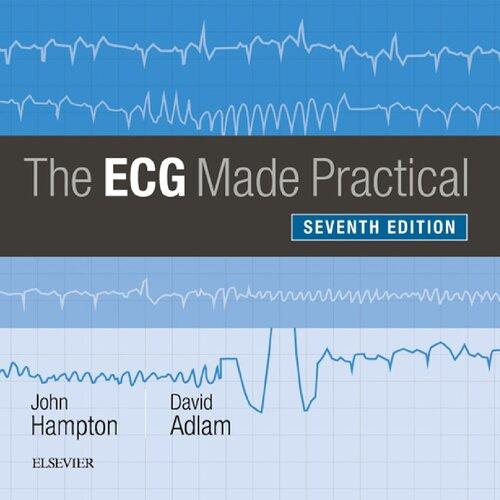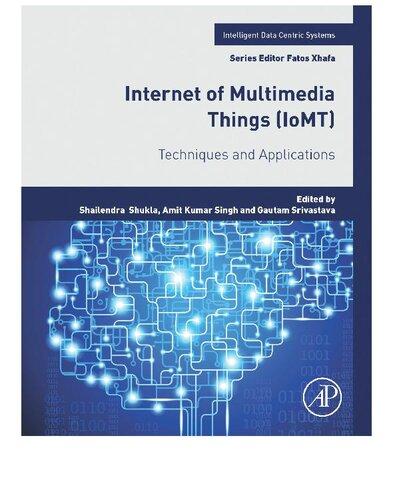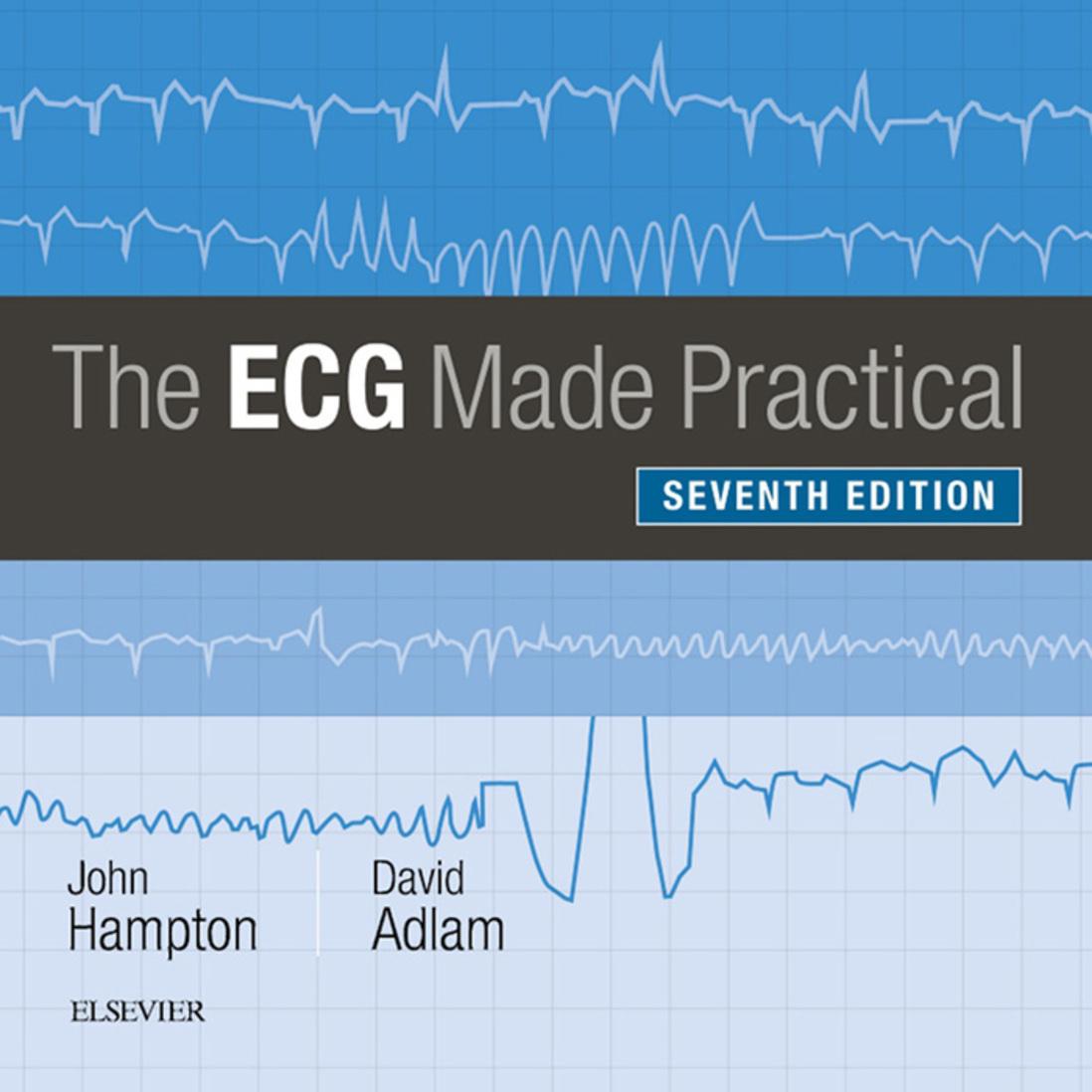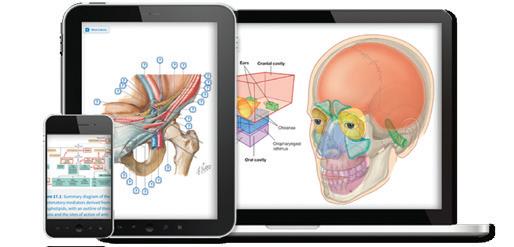12-lead ECGs
AAI pacing Fig. 5.31
Accelerated idionodal rhythm Fig. 1.47
Accelerated idioventricular rhythm Fig. 1.28
Anorexia nervosa Fig. 8.24
Aortic stenosis, severe, left ventricular hypertrophy with Fig. 7.8
Aortic stenosis and left bundle branch block Fig. 7.6
Atrial fibrillation Fig. 4.21, Fig. 4.22, Fig. 5.10
Atrial fibrillation, uncontrolled Fig. 7.1
Atrial fibrillation and anterior ischaemia Fig. 6.26
Atrial fibrillation and coupled ventricular extrasystoles Fig. 7.2
Atrial fibrillation and inferior infarction Fig. 4.37
Atrial fibrillation and left bundle branch block Fig. 4.26, Fig. 4.27
Atrial fibrillation and right bundle branch block Fig. 4.32
Atrial fibrillation and Wolff–Parkinson–White syndrome Fig. 4.45
Atrial flutter and 1 : 1 conduction Fig. 4.20
Atrial flutter and 2 : 1 block Fig. 4.17
Atrial flutter and 4 : 1 block Fig. 4.19
Atrial flutter and intermittent VVI pacing Fig. 5.27
Atrial flutter and variable block Fig. 5.9
Atrial flutter in hypothermia Fig. 8.2
Atrial septal defect and right bundle branch block Fig. 8.9
Atrial tachycardia Fig. 4.16
Atrioventricular nodal re-entry tachycardia (AVNRT) and anterior ischaemia Fig. 4.14, Fig. 6.27
Bifascicular block Fig. 2.22
Biventricular pacing Fig. 7.22
Broad complex tachycardia of uncertain origin Fig. 4.34, Fig. 4.35
Brugada syndrome Fig. 2.14, Fig. 2.15
Chronic lung disease Fig. 7.19
Complete heart block Fig. 5.13
Complete heart block and Stokes–Adams attack Fig. 5.15
Congenital long QT syndrome Fig. 2.12
DDD pacing, atrial tracking Fig. 5.34
DDD pacing, atrial and ventricular pacing Fig. 5.33
DDD pacing, intermittent Fig. 5.35
Dextrocardia Fig. 1.11
Dextrocardia, leads reversed Fig. 1.12
Digoxin effect Fig. 8.17
Digoxin effect and ischaemia Fig. 6.41
Digoxin toxicity Fig. 8.18
Ebstein’s anomaly, right atrial hypertrophy and right bundle branch block Fig. 8.8
Ectopic atrial rhythm Fig. 1.8
Electrical alternans Fig. 8.12
Exercise-induced ischaemia Fig. 6.44
Exercise-induced ST segment depression Fig. 6.46
Exercise testing, normal ECG Fig. 6.43, Fig. 6.45
Fallot’s tetralogy, right ventricular hypertrophy in Fig. 8.7
Fascicular tachycardia Fig. 4.33
First degree block and left bundle branch block Fig. 2.20
First degree block and right bundle branch block Fig. 2.21, Fig. 5.7, Fig. 5.14
Friedreich’s ataxia Fig. 8.26
His pacing Fig. 5.31
Hyperkalaemia Fig. 8.13
Hyperkalaemia, corrected Fig. 8.14
Hypertrophic cardiomyopathy Fig. 2.6, Fig. 7.11
Hypokalaemia Fig. 8.16
Hypothermia Fig. 8.3
Hypothermia, atrial flutter Fig. 8.2
Hypothermia, re-warming after Fig. 8.4
Intermittent VVl pacing Fig. 5.26
Ischaemia, anterior Fig. 6.24
Ischaemia, anterior and atrial fibrillation Fig. 6.26
Ischaemia, anterior and AV nodal re-entry tachycardia Fig. 6.27
Ischaemia, anterior and inferior infarction and right bundle branch block Fig. 6.21
Ischaemia, anterior and possible old inferior infarction Fig. 6.23
Ischaemia, anterior and right bundle branch block Fig. 6.20
Ischaemia, anterolateral Fig. 6.25
Ischaemia, digoxin effect and Fig. 6.41
Ischaemia, exercise-induced Fig. 6.44
Ischaemia, ?left ventricular hypertrophy
Fig. 7.10
Ischaemia, probable Fig. 7.9
Junctional tachycardia with right bundle branch block Fig. 4.33
Left anterior hemiblock Fig. 7.12
Left atrial hypertrophy Fig. 2.7
Left atrial hypertrophy and left ventricular hypertrophy Fig. 7.3
Left bundle branch block Fig. 2.3, Fig. 6.17
Left bundle branch block and aortic stenosis
Fig. 7.6
Left ventricular hypertrophy Fig. 2.2, Fig. 6.34, Fig. 6.39, Fig. 7.5, Fig. 7.7, Fig. 8.6
Left ventricular hypertrophy and ?ischaemia
Fig. 7.10
Left ventricular hypertrophy and left atrial hypertrophy Fig. 7.3
Left ventricular hypertrophy and severe aortic stenosis Fig. 7.8
Limb lead switch Fig. 1.3
Lithium treatment Fig. 8.22
Long QT syndrome, congenital Fig. 2.12
Long QT syndrome, drug toxicity Fig. 4.43
Malignant pericardial effusion Fig. 8.11
Mediastinal shift Fig. 1.22
Mitral stenosis and pulmonary hypertension
Fig. 7.4
Myocardial infarction, acute anterior and old inferior Fig. 6.16
Myocardial infarction, acute anterolateral, with left axis deviation Fig. 6.8
Myocardial infarction, acute inferior Fig. 6.2
Myocardial infarction, acute inferior and anterior ischaemia Fig. 6.13
Myocardial infarction, acute inferior infarction (STEMI) and anterior NSTEMI Fig. 6.15
Myocardial infarction, acute inferior and old anterior Fig. 6.14
Myocardial infarction, acute inferior and right bundle branch block Fig. 6.18
Myocardial infarction, acute lateral Fig. 6.6
Myocardial infarction, anterior Fig. 6.5
Myocardial infarction, anterior NSTEMI Fig. 6.22
Myocardial infarction, anterolateral, ?age Fig. 6.9
Myocardial infarction, evolving inferior Fig. 6.3, Fig. 6.4
Myocardial infarction, inferior and atrial fibrillation Fig. 4.37
Myocardial infarction, inferior and right bundle branch block Fig. 6.18
Myocardial infarction, inferior and right bundle branch block and ?anterior ischaemia Fig. 6.21
Myocardial infarction, inferior and right ventricular infarction Fig. 6.12
Myocardial infarction, inferior and ventricular tachycardia Fig. 4.38
Myocardial infarction, lateral (after 3 days) Fig. 6.7
Myocardial infarction, old anterior Fig. 6.10
Myocardial infarction, old anterolateral NSTEACS Fig. 6.40
Myocardial infarction, old inferior (possible) and anterior ischaemia Fig. 6.23
Myocardial infarction, old posterior Fig. 6.35
Myocardial infarction, posterior Fig. 6.11
Normal ECG Fig. 1.10, Fig. 1.13, Fig. 6.43, Fig. 6.45
Normal ECG, accelerated idionodal rhythm Fig. 1.47
Normal ECG, people of African origin Fig. 1.41, Fig. 1.42
Normal ECG, child Fig. 1.50
Normal ECG, ectopic atrial rhythm Fig. 1.8
Normal ECG, exercise testing Fig. 6.44, Fig. 6.46
Normal ECG, high take-off ST segment Fig. 1.32
Normal ECG, junctional escape beat Fig. 1.6
Normal ECG, left axis deviation Fig. 1.49
Normal ECG, ‘leftward’ limit of normality Fig. 1.17
Normal ECG, notched S wave (V2) Fig. 1.27
Normal ECG, P wave inversion Fig. 1.8, Fig. 1.35
Normal ECG, P wave inversion (lead VR, VL) Fig. 1.35
Normal ECG, partial right bundle branch block pattern Fig. 1.34
Normal ECG, pre-exercise Fig. 6.47
Normal ECG, R wave dominance (lead II) Fig. 1.14
Normal ECG, R wave dominance (V1) Fig. 1.23, Fig. 7.17
Normal ECG, R wave dominance (V3) Fig. 1.21
Normal ECG, R wave dominance (V4) Fig. 1.19
Normal ECG, R wave dominance (V5) Fig. 1.20, Fig. 1.25
Normal ECG, R wave size Fig. 1.14, Fig. 1.15
Normal ECG, right axis deviation Fig. 1.16
Normal ECG, ‘rightward’ limit of normality Fig. 1.15
Normal ECG, R–R interval variation Fig. 1.4
Normal ECG, RSR1 pattern Fig. 1.26
Normal ECG, RSR1S1 pattern Fig. 1.27
Normal ECG, S wave dominance (V3) Fig. 1.19
Normal ECG, S wave dominance (V4) Fig. 1.20
Normal ECG, septal Q wave Fig. 1.29, Fig. 1.49
Normal ECG, small Q wave Fig. 1.30, Fig. 1.37
Normal ECG, ST segment, isoelectric and sloping upward Fig. 1.31
Normal ECG, ST segment depression Fig. 1.34
Normal ECG, ST segment depression (nonspecific) Fig. 1.35
Normal ECG, ST segment elevation Fig. 1.33
Normal ECG, T wave, peaked Fig. 8.15
Normal ECG, T wave, tall peaked Fig. 1.44
Normal ECG, T wave flattening Fig. 1.43
Normal ECG, T wave inversion (lead III) Fig. 1.37
Normal ECG, T wave inversion (lead V1) Fig. 1.37
Normal ECG, T wave inversion (lead V2) Fig. 1.40
Normal ECG, T wave inversion (lead V3) Fig. 1.41
Normal ECG, T wave inversion (lead VR) Fig. 1.36
Normal ECG, T wave inversion (lead VR, V1–V2) Fig. 1.39
Normal ECG, T wave inversion in people of African origin Fig. 1.41, Fig. 1.42
Normal ECG, U wave, prominent/large Fig. 1.45, Fig. 1.46, Fig. 1.48
Pericardial effusion, malignant Fig. 8.11
Pericarditis Fig. 6.33
Pre-exercise normal ECG Fig. 6.47
Prolonged QT interval due to amiodarone Fig. 2.13, Fig. 8.20
Pulmonary embolus Fig. 6.29, Fig. 6.30, Fig. 6.31, Fig. 6.32, Fig. 7.20
Pulmonary hypertension and mitral stenosis Fig. 7.4
Pulmonary stenosis Fig. 8.5
Re-warming after hypothermia Fig. 8.4
Right atrial hypertrophy Fig. 7.14
Right atrial hypertrophy and right bundle branch block, in Ebstein’s anomaly Fig. 8.8
Right atrial hypertrophy and right ventricular hypertrophy Fig. 7.15
Right bundle branch block and acute inferior infarction Fig. 6.18
Right bundle branch block and anterior infarction Fig. 6.19
Right bundle branch block and anterior ischaemia Fig. 6.20
Right bundle branch block and atrial septal defect Fig. 8.9
Right bundle branch block and inferior infarction, ?anterior ischaemia Fig. 6.21
Right bundle branch block and right atrial hypertrophy, in Ebstein’s anomaly Fig. 8.8
Right ventricular hypertrophy Fig. 2.4, Fig. 7.18
Right ventricular hypertrophy, marked Fig. 7.16
Right ventricular hypertrophy in Fallot’s tetralogy Fig. 8.7
Right ventricular hypertrophy and right atrial hypertrophy Fig. 7.15
Right ventricular outflow tract ventricular tachycardia (RVOT-VT) Fig. 4.3, Fig. 4.41
RSR1 pattern Fig. 1.26, Fig. 2.14
RSR1S1 pattern Fig. 1.27
Second degree block (2 : 1) Fig. 5.12
Sick sinus syndrome Fig. 5.2
Sinus arrhythmia Fig. 1.4
Sinus bradycardia Fig. 1.6, Fig. 5.1, Fig. 5.2
Sinus rhythm, after cardioversion Fig. 4.18, Fig. 4.36
Sinus rhythm, in Wolff–Parkinson–White syndrome type A Fig. 4.12
Sinus rhythm and left bundle branch block Fig. 4.25
Sinus rhythm and normal conduction, postcardioversion Fig. 4.36
Sinus tachycardia Fig. 1.5
ST segment, nonspecific changes Fig. 6.1
ST segment depression, exercise-induced Fig. 6.46
Subarachnoid haemorrhage Fig. 8.25
Supraventricular extrasystole Fig. 1.7, Fig. 4.7
Supraventricular tachycardia Fig. 4.11
T wave, nonspecific changes Fig. 6.1
T wave, nonspecific flattening Fig. 6.42
T wave, unexplained abnormality Fig. 6.38
Thyrotoxicosis Fig. 8.10
Torsade de pointes Fig. 2.11
Trauma Fig. 8.23
Trifascicular block Fig. 2.23
Ventricular extrasystole Fig. 1.9, Fig. 4.8
Ventricular extrasystoles, coupled and atrial fibrillation Fig. 7.2
Ventricular fibrillation Fig. 4.50
Ventricular tachycardia Fig. 4.29, Fig. 4.30, Fig. 4.31
Ventricular tachycardia, fusion and capture beats Fig. 4.39
Ventricular tachycardia and inferior infarction Fig. 4.38
Ventricular tachycardia torsade de pointes Fig. 2.11
VVl pacing, bipolar Fig. 5.24
VVl pacing, intermittent Fig. 5.26
VVl pacing, unipolar Fig. 5.25
VVl pacing in complete block Fig. 5.28
Wolff–Parkinson–White syndrome and atrial fibrillation Fig. 4.45
Wolff–Parkinson–White syndrome type A Fig. 2.8, Fig. 2.9, Fig. 4.12, Fig. 4.44, Fig. 6.36, Fig. 7.13
Wolff–Parkinson–White syndrome type B Fig. 2.10, Fig. 6.37
The ECG in healthy people
The ECG is frequently used as a screening tool whether from a truly asymptomatic, apparently ‘healthy’, subject (e.g. for an employment medical) or as part of the battery of initial investigations in patients presenting with new symptoms of uncertain significance or cause. ECG findings should always be interpreted in the clinical context in which it was taken. Over-interpretation of normal variations in the ECG may lead to misdiagnosis and risk initiation of unnecessary investigations and inappropriate management. Understanding variations in the ECG that we can expect to find in completely healthy people is therefore a key prerequisite to the accurate interpretation of ECGs that appear ‘abnormal’.
TYPES OF ECG
ECG traces come in many guises including continuous single channel heart monitoring, 3-lead rhythm assessment, and even internal electrograms obtained from implanted devices or during cardiac procedures. The most ‘complete’ external ECG is the traditional 12-lead trace (Fig. 1.1). Accurate lead position (Fig. 1.2) is key as misplaced leads change the appearances of the trace and may lead to misinterpretation. For example, limb lead switches can resemble abnormalities of the cardiac axis (Fig. 1.3),
whilst alterations of chest lead position, for example due to displacement in obese patients or by breast tissue, may resemble cardiac rotation with delayed anterior R-wave progression (see Fig. 1.20).
THE ‘NORMAL’ ECG
The normal cardiac rhythm
Sinus rhythm is the only normal sustained rhythm (see Fig. 1.1). In young people the R–R interval is reduced (i.e. the heart rate is increased) during inspiration, and this is called sinus arrhythmia (Fig. 1.4). When sinus arrhythmia is marked, it may mimic an atrial arrhythmia. However, in sinus arrhythmia each P–QRS–T complex is normal, and it is only the interval between them that changes.
Sinus arrhythmia becomes less marked with increasing age of the subject, and is lost in conditions such as
diabetic autonomic neuropathy due to impairment of vagus nerve function.
The heart rate
There is no such thing as a normal heart rate, and the terms ‘tachycardia’ and ‘bradycardia’ should be used with care. There is no point at which a high heart rate in sinus rhythm has to be called ‘sinus tachycardia’ and there is no lower limit for ‘sinus bradycardia’. Nevertheless, unexpectedly fast or slow rates do need an explanation.
Sinus tachycardia
The ECG in Fig. 1.5 was recorded from a young woman who complained of a fast heart rate. She had no other symptoms, but was anxious. There were no other abnormalities on examination, and her blood count and thyroid function tests were normal.
Normal ECG
Fig. 1.1
6chestleadslookingatheartfromthefront
6 limb leads looking at heart from the sides and from below
ECG lead positions for the chest and upper limb leads. Correct positioning of the lower limb leads is also required for a 12-lead ECG (not shown here).
Fig. 1.3
Fig. 1.4
Limb lead switch
NOTE
• Prominent R wave in a VR
• Inverted limb lead complexes
• Normal chest leads
Sinus arrhythmia
NOTE
• Marked variation in R–R interval
• Constant PR interval
• Constant shape of P wave and QRS complex
BOX 1.1 Possible Causes of Sinus Rhythm With a Fast Heart Rate
• Pain, fright, exercise
• Hypovolaemia
• Myocardial infarction
• Heart failure
• Pulmonary embolism
• Obesity
• Lack of physical fitness
• Pregnancy
• Thyrotoxicosis
• Anaemia
• CO2 retention
• Autonomic neuropathy
• Drugs:
• sympathomimetics
• salbutamol (including by inhalation)
• caffeine
• atropine
Box 1.1 shows possible causes of sinus rhythm with a fast heart rate.
Sinus bradycardia
The ECG in Fig. 1.6 was recorded from a young professional footballer. His heart rate was 44 bpm, and at one point the sinus rate became so slow that a junctional escape beat appeared.
The possible causes of sinus rhythm with a slow heart rate are summarized in Box 1.2.
Extrasystoles
Supraventricular extrasystoles, either atrial or junctional (atrioventricular [AV] nodal), occur commonly in normal people and are of no significance. Atrial extrasystoles (Fig. 1.7) have an abnormal P wave; in junctional extrasystoles either there is no P wave or the P wave may follow the QRS complex.
Fig. 1.6
Fig. 1.5
Sinus tachycardia
NOTE
• Normal P–QRS–T waves
• R–R interval 500 ms
• Heart rate 120 bpm
Sinus bradycardia
NOTE
• Sinus rhythm
• Rate 44 bpm
• One junctional escape beat
Junctional escape beat
BOX 1.2 Possible Causes of Sinus Rhythm With a Slow Heart Rate
• Physical fitness
• Vasovagal attacks
• Sick sinus syndrome
• Acute myocardial infarction, especially inferior
• Hypothyroidism
• Hypothermia
• Obstructive jaundice
• Raised intracranial pressure
• Drugs:
• beta-blockers (including eye drops for glaucoma)
• calcium channel blockers (e.g. verapamil)
• digoxin
• ibabradine
In healthy people, normal sinus rhythm may be replaced by what are, in effect, repeated atrial extrasystoles. This is sometimes called an ‘ectopic atrial rhythm’ and it is of no particular significance (Fig. 1.8).
Ventricular extrasystoles are also commonly seen in normal ECGs (Fig. 1.9). Ventricular extrasystoles are almost universal, but when very frequent they indicate populations at increased risk and may merit further investigation (see Ch. 4, p. 101).
Fig. 1.7
Fig. 1.8
Supraventricular extrasystole
NOTE
• In supraventricular extrasystoles the QRS complex and the T wave are the same as in the sinus beat
• The fourth beat has an abnormal P wave and therefore an atrial origin
The P wave
In sinus rhythm, the P wave is normally upright in all leads except VR. When the QRS complex is predominantly downward in lead VL, the P wave may also be inverted (Fig. 1.10).
In patients with dextrocardia the P wave is inverted in lead I (Fig. 1.11). In practice this is more often seen if the limb leads have been wrongly attached (Fig. 1.3), but dextrocardia can be recognized if leads V5 and V6, which normally ‘look at’ the left ventricle, show a predominantly downward QRS complex.
Early abnormal P wave
Normal variant: ectopic atrial rhythm
NOTE
• Sinus rhythm
• Inverted P wave in leads II–III, VF, V4–V6
• Constant PR interval
Inverted P waves in lead II
Fig. 1.9
Fig. 1.10















